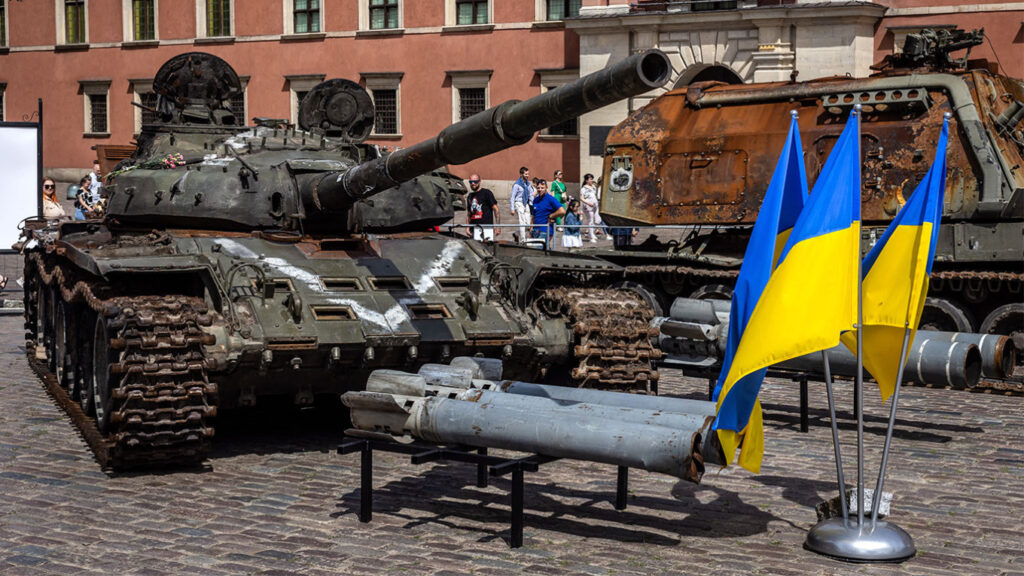
STRATEGIC ASSESSMENT. Russia’s most modern and technologically advanced tank, the T-90M, has appeared in photos and videos in Ukraine just a handful of times since the beginning of the invasion.
Moscow’s invasion of its pro-Western neighbor in February has been accompanied by a steady stream of images of burnt-out tanks, sometimes with their turrets blown off, as well as tanks on fire with their crews trapped inside. According to military analysts, these tank losses are one of the major issues facing Russia as it seeks to continue its offensive in Ukraine.
Russian military doctrine has always been to build and maintain large numbers of tanks, according to James Lewis, an analyst at the Strategic and International Studies Institute in Washington. The country’s tank fleet — which is estimated to be 2,800 strong with another 10,000 in storage — consists mostly of modernized Soviet tanks manned by crews of three.
Russia has lost 237 T-72B3 tanks, hundreds more T-72 variants as well as at least 170 T-80 models since the start of the attack on Ukraine in February, according to Oryx, an intelligence blog that tracks Russian military losses.

Russia’s 4th Guards Tank Division, which is solely equipped with T-80s, reportedly lost as many as 41 tanks in just two weeks, according to military analysis platform Battle Order.
While destroying a tank does not mean the crew is killed, there has also been a high rate of casualties among Russian tank crews.
A total of 6% of Russia’s deaths in Ukraine have been among men from tank regiments, according to a casualty tally based on publicly available information that is kept by independent media outlet Mediazona.
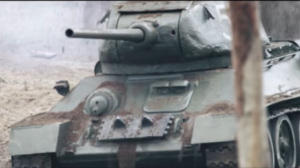
Russia’s rapid rate of attrition has led some observers to question whether the tank has a future in modern warfare at all.
“Tanks are supposed to fight as part of combined formations, but in terms of how they’ve been tactically used, Russia hasn’t done that effectively,” said Nick Reynolds, a military expert at the London-based Royal United Services Institute.
In theory, tanks should be supported by infantry and artillery that are able to locate and destroy enemy soldiers armed with anti-tank weapons.
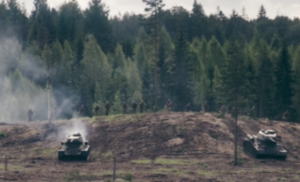
In the early days of the war, columns of Russian armor became jammed up along Ukrainian highways, allowing Ukrainian infantry to pick off tanks — and other vehicles — using a range of portable, shoulder-fired anti-tank weapons.
U.S.-made Javelins and British-Swedish manufactured Next Generation Light Anti-tank Weapons (NLAWs), have been responsible for hundreds of Russian tank losses.
When fired, the Javelins ascend 150 meters in the air before plummeting down onto the tank’s turret, where the vehicle’s armor is the thinnest.
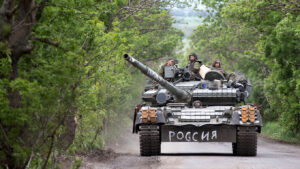
“Everyone in the crew was shell-shocked,” Russian tank crew member Alexei Ukhachev said of an incident in which his tank was hit by a Javelin in the early days of the war in a May interview with Russian media outlet Moskovsky Komsomolets.
Penetration of the turret can cause the tank to “cook off” if the ammunition stored in the carousel below the turret catches fire. In such cases, the subsequent explosion can send the turret shooting tens of meters into the air.
“People used to say the best way to destroy a tank is to use another tank, but the new missiles make you wonder about that,” said Lewis.
The T-72B3, a more mobile version of the Soviet T-72, makes up the backbone of Russia’s tank fleet and has been heavily relied on in Ukraine. But Russia has also deployed hundreds of T-80 tanks, including the T80U, T80BV and the most modernized T-80, the T80BVM, which came into service in 2018.
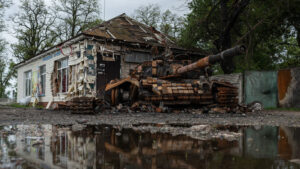
In addition, tank losses have meant Moscow is taking a number of older tanks out of storage to deploy to Ukraine.
Soviet era T-62s, a tank which entered service in 1961, have been spotted in Ukraine and on trains being transported across Russia, presumably on their way to the battlefield.
In a bid to protect themselves against drone attacks and anti-tank missiles, Russian troops in Ukraine have added a number of makeshift cages to the tops of tanks.
They have also used sandbags, pine logs and metal cages to reinforce their vehicles, according to photos and videos published online. U.K. Defense Secretary Ben Wallace said in May that the sight of these tanks was “nothing short of tragic.”
“These measures are clearly an attempt to defend tanks from above, but it doesn’t work,” said Reynolds.
Ukhachev told Moskovsky Komsomolets how tank crews removed the roof screens when they realized they restricted the tank gun’s movement and made it difficult to dismount in case of a fire.
Russia’s failure to find an answer to modern anti-tank weaponry brings the future of Russia’s long-term reliance on tanks in warfare into question, according to Lewis.
“Tanks will still have a place, but their future will be a smaller role because of their vulnerability,” he said. (Red/Moscow Times)







